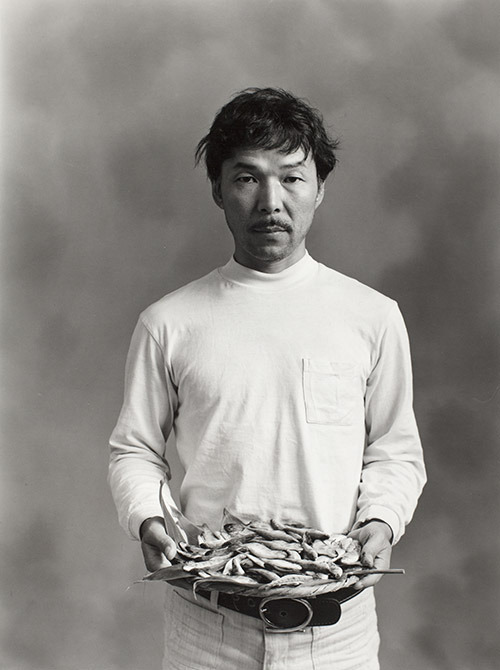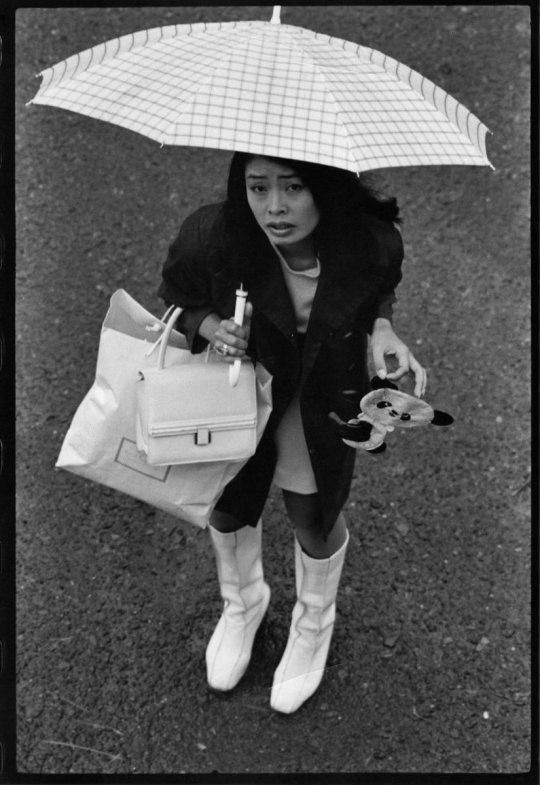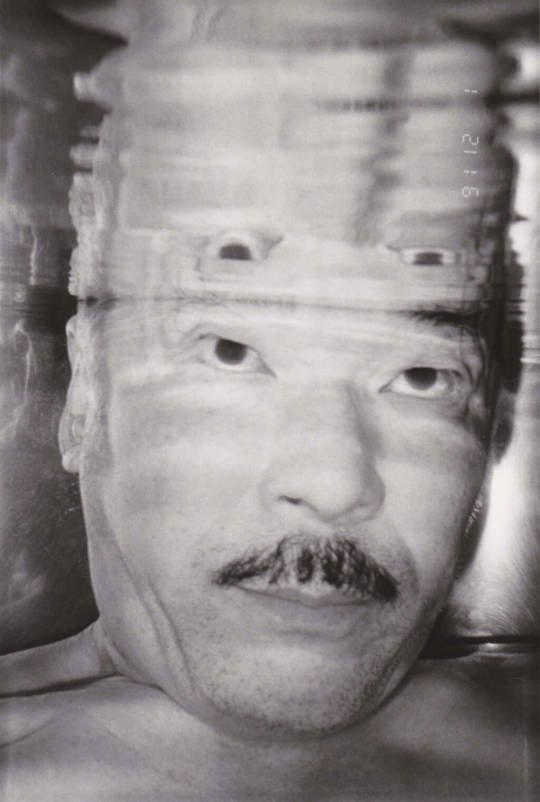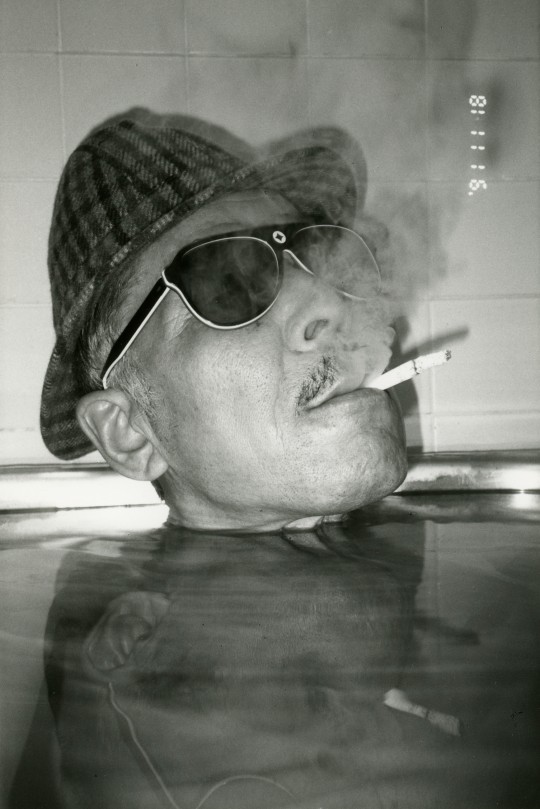#yōko wanibe
Explore tagged Tumblr posts
Text




Yōko Wanibe ph Masahisa Fukase
2K notes
·
View notes
Text




Yōko Wanibe ph Masahisa Fukase
17 notes
·
View notes
Text
Masahisa Fukase 深瀬 昌久
Masahisa Fukase (1934 -2012) was a post war Japanese photographer. While his name might not ring the bell, you might had seen his of photographies From Window depicting his wife Yōko Wanibe.



The couple divorced in the 70s, what followed is haunting series called Karasu (Ravens). The series was shot between 1976 and 1982.





#found by kino#art history#japan#vintage photography#japanese art#Masahisa Fukase#深瀬 昌久#japanese photography#ravens#20th century#shout out to my friend eelo#for showing me this <3
15 notes
·
View notes
Text
PHOTOGRAPHY RESEARCH PT.4
MASAHISA FUKASE
Masahisa Fukase is an almost obsessive photographer from Japan known for photographing domestic life no matter how serious or intimate the occasion it was crucial for Masahisa Fukase to capture every moment with his camera like a Time Capsule. His work dates from 1961 up until his death in 2012. He is known most prominently as the man who only photographed his wife and it’s this series “From Window” which I will be looking at.
His wife’s name is Yōko Wanibe and was his wife and muse for 12 years. Although Yōko later says, “we have lived together for 10 years, but he has only seen me through the lens. I believe that all photographs of me were undeniably photos of himself.” Which is an equally interesting and depressing quote to hear about Masahisa and it links back to the obsessive and perhaps selfish style of his photography. All the photographs of Yōko are taken from a high up window in their shared apartment, so Masahisa sits up there ready with his camera as Yōko is leaving perhaps to go out for work or to run errands and Yōko typically will dress up nice, look back at the apartment and pull faces. It’s all very light, playful and humorous at the beginning but as their marriage falls apart slowly In the end and divorce becomes a very likely thing Yōko gets further away from the window and is a less willing participant in these images. These images are all in black and white which is a Masahisa staple and it’s said that some of the positions and outfits Yōko dressed in, although it looks sweet and candid, were directed slightly by Masahisa.




These images interest me because they represent the relationship between people through portraits. We can see the connection between Masahisa and his wife Yōko and how it changed with time. I also love a candid style image and the idea of capturing a moment in time and although staged studio images can sometimes be more pleasing to me aesthetically I love the sentiment behind capturing images like these.
3 notes
·
View notes
Text

Japanese photographer Masahisa Fukase (25th February 1934 – 9th June 2012) almost exclusively shot his second wife Yōko Wanibe for thirteen years until their separation in 1976, then until 1982 obsessively captured ravens as symbols of his depression. Fukase's death followed twenty years in a coma, after falling down the stairs of his favourite bar. Yōko visited him twice a month during this period, although he may never have been aware of her presence.
via @/the-red-native
1 note
·
View note
Photo

Masahisa Fukase, Yōko (1974)
Japanese photographer Masahisa Fukase (25th February 1934 – 9th June 2012) almost exclusively shot his second wife Yōko Wanibe for thirteen years until their separation in 1976, then until 1982 obsessively captured ravens as symbols of his depression.
Fukase's death followed twenty years in a coma, after falling down the stairs of his favourite bar. Yōko visited him twice a month during this period, although he may never have been aware of her presence.
via the deactivated the-red-native
714 notes
·
View notes
Text

Yōko Wanibe by Masahisa Fukase, famous for portraits of their spouse
5 notes
·
View notes
Text
10 portrait inspiration
Masahisa Fukase was born in the town of Bifuka in the Nakagawa District, Hokkaido, Japan in 1934, the son of a successful local studio photographer. He graduated from Nihon University College of Art’s Photography Department in 1956, and became a freelance photographer in 1968 following brief stints at the Nippon Design Center and Kawade Shobo Shinsha Publishers. In the mid 1970s he set up a photographic school, The Workshop, with Daido Moriyma and Shomei Tomatsu.

Fukase is considered as one of the most comprehensive and experimental photographers of the post-war generation in Japan. He became world-renowned for his photographic series and ensuing publication Karasu made between 1975 and 1982 in the wake of his wife Yōko Wanibe divorcing him. The visual narrative of the series revolves around the anthropomorphic form of the raven, which is widely celebrated as a photographic masterpiece. And yet a majority of his work remained largely inaccessible to the public for over two decades. In 1992 Fukase developed permanent brain damage after a tragic fall, and it was only after his death in 2012 that his archives of work were gradually disclosed to the public. Since then a wealth of material has surfaced that had never previously been shown.
His work has been exhibited widely at institutions such as MoMA, New York, the Oxford Museum of Modern Art, the Foundation Cartier pour l’Art Contemporain, and the Victoria & Albert Museum London. His work is held in major collections including the Victoria & Albert Museum, the San Francisco Museum of Modern Art, the Metropolitan Museum of Art, New York, and The Getty Museum. He is also the winner of prizes including the 2nd Ina Nobuo Award, as well as the Special Award at the 8th Higashikawa Photography Awards.

At a first glance, Masahisa Fukase's Bukubuku might feel like an amusing , diverting, however shows a darker take on the self portrait. childhood memories of playing around in the bathtub. However, delving deeper into his biography, the black and white images of the Japanese photographer, taken in 1991, alone and submerged in his bathtub are symbolic of the isolation and loneliness he felt at the time.

Once a primary focus of his work, his marriage to second wife Yōko Wanibe, gaining him recognition as a photographer who only photographed his wife and reflecting on this again aafter his divorce on in his work Karasu.

Each individual project made by Fukase has a totally different matrix and subject. He did not use the same printing styles nor photography techniques for each project. This is most unusual and it is one of the elements that makes him so very special,” says Hoppen. Explaining his fascination with the work, which took him eight months to acquire, he explains, “I initially found myself being reminded how similar the Japanese and British sense of humour is (when viewing Bukubuku). The work seemed flippant and comical. But on closer inspection and after speaking to many close acquaintances of Fukase, I learnt that he saw this very much as a performance piece of work and this it was shaped by Fukase as an introspective and mournful soliloquy to his ex-wife Yoko, just after he learnt that she had gotten remarried.”


Taken over a two-month period with a Nikonos camera, Bukubuku was Fukase's last ever published photo book, with the prints never seen outside of Japan – instead, remaining secure in a box after they were first shown in Japan in 1992. Hoppen adds, “The work was made on a marvellous camera designed for underwater photography and had a flash incorporated into the camera. The flash, when used, utilises the wonderful refractive qualities that water has. It is quite brilliant in every sense.”
4 notes
·
View notes
Text




photographed by masahisa fukase: the man who photographed nothing but his wife, yōko wanibe
5 notes
·
View notes
Photo

Japanese photographer Masahisa Fukase made his obscure masterpiece ‘Ravens’ (‘Karasu’) between 1975 and 1982 as a way of overcoming a personal emotional trauma following a divorce with his second wife Yōko Wanibe. Though the photographs at first sight are a personal lament reflecting the darkened vision of the photographer himself, they are regarded by many as the most important body of work to come out of postwar Japan, and still its imagery continues to inspire artists and writers today.
The project originated as an eight-part series for the magazine Camera Mainichi and these photo essays reveal that Fukase experimented with multiple exposure printing and narrative text as part of the development of the Karasu concept. The first book was published in 1986, subsequent editions were published in 1991 and and 2008, and in May, 2017 a new one published by Mack Books.
“Ravens is one of the defining bodies of work in the history of photography and a high point in the photo book genre. This accumulation of accolades, and the passing of time, have obscured much of the fascinating detail which explains the artist’s pre-occupation with this motif throughout his work. It was not simply a reflection of the existential angst and anhedonia he suffered throughout his life but manifested in artistic self-identification with the raven and ultimately spiralled into a solitary existence and artistic practice on the edge of madness…” Tomo Kosuga from his essay Cries of Solitude [2017]
#photography#masahisa fukase#the solitude of ravens#black and white photography#mack books#photo books#fine art photography#short visual stories
2 notes
·
View notes
Photo



Masahisa Fukase’s Karasu (Ravens) was made between 1975 and 1982 in the wake of his wife Yōko Wanibe divorcing him. The visual narrative of the series revolves around the anthropomorphic form of the raven. Dead and alive the birds punctuate the work; lone birds reduced to shadow puppetry against the snow or dislocated flocks that mimic the grain of the photographs themselves. Although interjected with other subjects such as blizzard streaked streets or the fleshy form of a nude masseuse, it is the recurrent presence of the ravens that sets the ominous and cinematic tone of the work.
Ravens are an omnipresent feature of urban Japan. As in the west, the image of the raven is seen as the harbinger of dark times. Fukase came to prominence as a photographer in the aftermath of WWII and as such the series has, on occasion, been read as a commentary upon the shadow cast by Japan’s defeat. Inherently abstract this elusive soliloquy is open to multiple interpretations. Primarily, however, the photographs are a personal lament reflecting the darkened vision of the photographer himself. Regarded by many as the most important body of work to come out of postwar Japan, Ravens’ haunting imagery continues to inspire artists and writers today.
https://mackbooks.co.uk/products/ravens-br-masahisa-fukase
https://americansuburbx.com/2017/05/masahisa-fukase-a-procession-of-moons.html
https://www.michaelhoppengallery.com/exhibitions/127/overview/#/artworks_standalone/10173
https://www.1854.photography/2017/05/photobook-new-edition-of-ravens-by-masahisa-fukase/
https://www.youtube.com/watch?v=Hx4FhAljFnE
youtube
0 notes
Photo

Masahisa Fukase, Nayoro (1977)
After the breakdown of his second marriage to Yōko Wanibe in 1976, for six years photographer Masahisa Fukase obsessively captured ravens as symbols of his 'lost love and almost unendurable heartbreak’.
Fukase's death in 2012 followed twenty years in a coma, after falling down the stairs of his favourite bar. Yōko visited him twice a month during this period, although he may never have been aware of her presence.
see also here
33 notes
·
View notes

